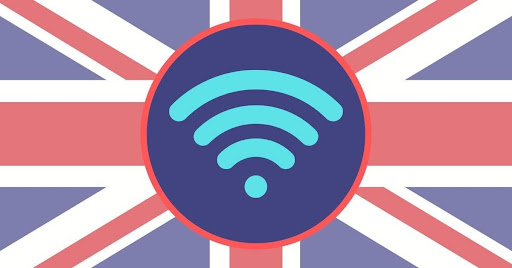Table of Contents
- Overview of the UK Housing Market
- Economic Influences
- Impact of Rising Interest Rates
- Current Market Stagnation
- Impact of a Rate Cut on Mortgage Affordability
- Effects of Lower Interest Rates
- Affordability for First-Time Buyers
- Relief for Existing Homeowners
- Impact on Housing Demand and Prices
- Effects on Housing Demand
- Potential Price Increases
- Regional Variations in Property Prices
- Supply in Housing Markets
- Shortage of Housing Supply
- Long-Term Supply-Side Effects
- Impact on Private Rental Market
- Effects on Buy-to-Let and Investment Properties
- Impact on Buy-to-Let Market
- Financial Implications for Investors
- Effect on Rent Prices
- Possible Risks and Challenges
- Risk of Market Overheating
- Potential for Financial Instability
- Long-Term Inflationary Pressures
- Conclusion
- Likely Outcomes for the Housing Market
- Factors Influencing Future Stability
- Role of Economic Conditions and Policy Adjustments
The UK has always had a strong economy regarding its housing market, depicting a big household wealth percentage; however, performance may show wide variations based on—among others—interest rate factors, economic conditions, and government policies. Arguably, the most decisive individual health determinant in this market regards changes in interest rates.
For a year that has witnessed the promise of interest rate cuts as early as 2025, it has become relevant on how these changes might dictate the UK housing market for buyers and sellers, homemakers, and investors alike.
1. Overview of the UK Housing Market

The UK housing market is truly one that has witnessed quite a few ups and downs in recent years. From the post-COVID scenario, through inflationary pressures, to increased interest rates by the Bank of England, the market has remained highly volatile. By late 2024, this period reflects a time of stagnation in the housing market, where the question of affordability remains key.
High interest rates in the last couple of years have raised the cost of borrowing for prospective buyers and reduced property transaction volumes. Fewer people could now afford to buy new homes, and many existing homeowners are not willing to sell. More lately, the rise in mortgage rates has flung a heavy financial load on households, as many of them were forced to go into higher repayments.
Helping, too, is the cooling housing market: property price growth is cooling as demand is increasingly restrained by rising borrowing costs.
2. Impact of a Rate Cut on Mortgage Affordability
Cuts to interest rates are generally considered friendly, both to economic growth and to households. If the interest rates were to fall, that would mean cheaper credit—thus, cheaper mortgages for households—which in turn increases household expenditure at the same period of an income increase. This will put forth that the housing market will, in this respect and perspective, in 2025, reduce the amount that current or future homeowners will have been paying as monthly mortgage repayment.
To the buyer, lower interest rates make the attainment of home ownership more feasible. Generally speaking, lower mortgage rates would translate to one very important thing: better affordability—especially for first-time buyers who have been shut out of the property markets because of high borrowing costs.
That is a major financial saving for most households if it were fewer mortgage payments one is forced to take advantage of to ease the strains of tight revenues and move closer to property acquisition.
It would also be a blessing for the many existing homeowners in variable-rate mortgages or coming to the end of fixed-rate deals, as this cut would reduce their monthly repayments and give some relief to all those people who have struggled to keep up with increasingly expensive mortgages over the past few years.
Cuts in interest rates could reduce monthly repayments almost overnight for those with variable-rate mortgages, taking some of the sting out of the recent rises.
In other words, the rate cut takes away an affordability crisis for most buyers, which spurs demand and likely makes for a rather active housing market with buyers more apt to take on mortgages and move forward with plans.
3. Impact on Housing Demand and Prices
Cuts in the interest rate will go a long way in helping demand for housing. Cheaper borrowing will encourage more people to enter the market or trade up to a more expensive property, increasing competition for homes. Stronger demand tends to push up property prices as more buyers compete for limited housing stock.
Pricing out, 2025 rate cuts can ultimately take the stagnation from UK house price inflation upwards. Affordability—fundamentally—will also push house prices on the upside because more buyers may come into play, especially first-time buyers and upsizing customers.
Other conditions in the economy, such as the supply of housing, the general level of growth, and local markets, would also cap the rate at which the prices rise. The positive impact it would bring to homeowners could be an increase in their property values, thereby boosting consumer confidence. They will feel better about their wealth, and this could consequently spur spending, fuelling economic growth.
This, in turn, can also spur investors to buy properties in anticipation of the value of such assets appreciating with time once the recovery of the market starts and demand increases.
However, while the general trend for housing prices could be upward, it is nonetheless likely to be more pronounced in certain areas than others. Big cities such as London, Manchester, and Birmingham may post larger growth, explained by the fact that demand is concentrated at hubs of economic activity. The lesser areas of demand will conversely have smaller price increases.
4. Supply in Housing Markets
While the rate cut may stir demand for the housing market, the supply of homes remains a very significant factor in determining how this impact falls on property prices. The UK has suffered many years of a lack of home building, with an insignificant number of new homes constructed yearly against the requirement from the ever-growing population. This shortage has driven the housing price inflation that the country has witnessed for many decades.
The cut in interest rates cannot sort out the supply crisis in housing in the short term. It is the holdups in construction and planning, lack of manpower, and limited land availability that holds builders back from meeting the demand. With tight supplies in housing, the effects of rate cuts could be stronger in pushing property prices up, mainly in places where supplies are very limited.
Larger cuts in the interest rate also have quite a few longer-term supply-side effects. First, under the right lending conditions, developers may increase their investments in new projects, knowing that demand would be more vigorous and that financing costs are reduced. Developers have access to cheaper capital, putting new homes on the market to help alleviate some of those supply pressures.
In fact, rate cuts can have a positive effect on the private rental market. Low mortgage rates might attract more buyers rather than renters, which will decrease demand for rented accommodation and therefore reduce upward pressure on rents.
5. Effects on Buy-to-Let and Investment Properties
This will rejuvenate the buy-to-let market, which has been at the mercy of higher interest rates over recent years. Lower mortgage costs would improve the profitability of buying rental properties due to the reduced ongoing financing costs. This might spark more investment in the residential property market as investors seek to take advantage of the growing demand for rental properties in some of the strong rental markets.
However, high borrowing rates, coupled with rising taxation over recent years, means the sector is truly suffering. Indeed, this could well be higher once again at the end of 2025 because lower rates are now reducing, and property will rise through new heightened demand, making for substantial increases in capital values for buy-to-let investors. This will undoubtedly have implications for the private rented sector, where stock levels have become rare.
Far stronger private investment in letting would mean support for the private rent supply, easing some of the upward pressure on rents. On the other hand, there is a chance it could increase upward pressure on the demand for homes to rent, particularly if first-time buyers are priced out as the rising value of property.
6. Possible Risks and Challenges
While cuts in the interest rate will have several positive effects that could help the housing market in 2025, they are not devoid of risks. One of the main risks is that they may lead to overheating in the housing market. This could get out of hand and cause unaffordability to buyers if demand for properties increases too quickly due to the affordability of borrowing, leading to increased financial instability.
These cuts in rates may only provide temporary respite if inflationary pressures remain. If inflation does not come down even after a rate cut, the purchasing power of buyers may remain constrained, and it could hold the housing market back from maintaining momentum. Another risk is that cuts might encourage more aggressive borrowing. While it could be easier with lower mortgage rates to service the same level of debt in the near term, there is a danger—particularly for buyers—of over-extending themselves in purchases, stretching beyond their affordability limits and setting them up for later distress. This is especially true for those homeowners who may not currently be able to manage this later when rates rise again.
7. Conclusion
Where the cuts in the 2025 rate can make a big difference is within the UK housing market. With lower borrowing costs come higher affordability levels and higher demand, with prices of housing market activities likely rising once more. This should be a respite in some quarters, welcomed by prospective buyers and owners who have been under so much duress with high interest rates in the last couple of years.
But while the immediate effects of cutting the interest rate are very likely to be favorable, the longer-term outcomes will depend on several variables, including the rapidity of economic recovery and the size and pace at which inflation and house supplies reach equilibrium. When housing supply is constrained and if demand is strong, property prices risk beginning to rise, delaying ownership for many by yet another year.
While cuts in interest rates may finally bring stability and growth to the housing market, they must be accompanied by prudent handling of inflation, housing supply, and general economic conditions to avoid creating new problems in the long run. With that in mind, the UK Housing Market in 2025 looks set to confront an exciting bouquet of dynamics: interest rate slashes, though not in isolation from many other important determinants.
Frequently Asked Questions (FAQs)
1. What does a rate cut suggest for the UK housing market in 2025?
Rate cuts are likely to decrease the cost of borrowing, improve buyers’ affordability, boost demand, and probably jack up property prices.
2. Will mortgage rates go down if there is an interest rate cut?
Yes, the reduction of interest rates will definitely decrease mortgage rates and make home loans much more affordable for prospective buyers.
3. How will lower interest rates affect first-time home buyers?
The affordability of housing for first-time buyers would improve with lower interest rates, enabling them to penetrate the property market more easily.
4. What about current homeowners with mortgages? How will rate cuts impact them?
Variable-rate mortgage holders or those whose fixed-rate deals are about to expire might get some relief as their monthly repayments may fall, easing the financial squeeze.
5. Will interest rate cuts mean higher property prices?
Yes, cheaper borrowing and rising demand could push property prices higher, especially in the absence of enough housing supply.
6. How is demand for housing affected with a reduced cost of borrowing?
With lower borrowing costs, the affordability of homes is boosted, thus raising demand and likely leading to increased competition for properties.
7. How much longer will rate cuts impact the housing market?
While some of the immediate effects might be observable within months, long-term effects depend on wider economic factors, including inflation and housing supply.
8. Will rate cuts make people sell their homes more easily?
Yes, more buyers who come to the market because of lower mortgage rates help the sellers find buyers for their properties.
9. Interest rate cuts in the housing market: what are the risks?
Interest rate cuts could lead to overheating in the market, with prices rising too quickly and making homes unaffordable again for many buyers.
10. What will be the effect of cuts in interest rates on the rental market?
Rate cuts may decrease demand for rented properties because more people would be able to afford buying homes. This may ease upward pressure on rent prices.
11. How will the rate cuts affect buy-to-let investors?
This might turn around as buy-to-let investors benefit from lower mortgage rates to better returns on investment in rented houses, particularly in areas of demand.
12. Will rate cuts solve the UK’s housing supply issues?
No, rate cuts can spur demand, but they cannot directly help the supply problems of inadequate housing construction and shortage of land.
13. How will a cut in interest rates influence the affordability of housing?
Rate cuts should make mortgages more affordable by reducing borrowing costs, thus making people buy more homes.
14. Could rate cuts increase housing market activities?
Yes, lower borrowing costs should increase activity, as more buyers can get into the market and more sellers may be willing to list properties.
15. Which areas will see the most significant impact from rate cuts?
The highest increases in property prices will most probably be seen in big cities such as London, Manchester, and Birmingham due to very high demand with low available supply.
16. Will rate cuts be transmitted immediately into the housing market?
The implications for the housing market would be felt quite comparatively quickly, although complete adjustments in the market would take time as buyers, sellers, and investors responded.
17. Despite the rate cuts, how would inflation affect the housing market?
High inflation, if it persists, may undermine the purchasing power of buyers and therefore diminish the beneficial impact of rate cuts on affordability.
18. What if buyers overextend themselves after rate cuts?
Buyers who take on too much debt, even with lower rates, risk financial distress if rates rise again or if they cannot manage their repayments.
19. Will interest rate cuts save the housing market from crashing?
While rate cuts can prop up demand, they cannot delay the crash if other conditions in the economy, like inflation, start to deteriorate, or there is an oversupply of housing.
20. Will the estate market be stable after such rate cuts?
Other economic factors, including inflation, employment, and the state of the housing supply, will determine the stability of the housing market after the rate cuts.






1 Comment
Your comment is awaiting moderation.
Pretty! This was a really wonderful post. Thank you for your provided information.
Your comment is awaiting moderation.
a38dek
Your comment is awaiting moderation.
smm продвижение стоимость
Tempora officia harum officia consequatur rerum molestiae numquam. molestiae et. Nesciunt qui omnis distinctio qui. Aut optio dolor eveniet. Sint iste sit et perferendis temporibus. adipisci voluptatem totam facere totam et itaque.